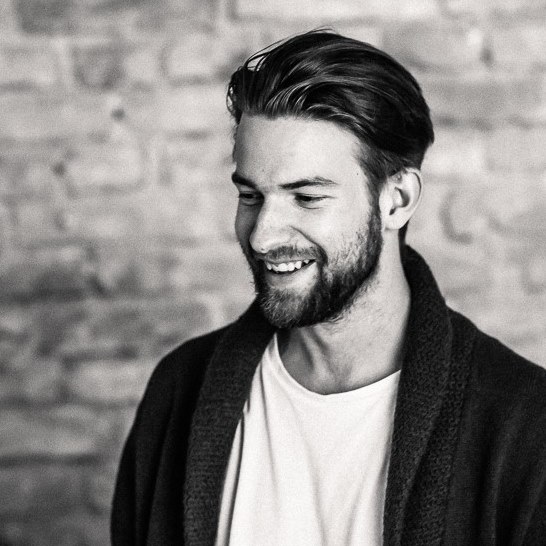
JOURNAL
A visit to Studio Aisslinger
“Werner Aisslinger is the designer that never stops” was the headline in the Berliner Morgenpost newspaper at the beginning of the year. Not even six months later I find myself sitting in the meeting room of Studio Aisslinger, not far from Berlin train station, in a 500 m² industrial loft, which reminds me more of a biotope for designers.

A few prototypes are lying around that you would know from somewhere if you have even an inkling of interest in product design. Various neon letters spelling the words UTOPIA, FARMING, NATURE and STORYTELLING are illuminated above the workspaces of Aisslinger’s staff, who even after 7:00 pm are still working on drawings for their many upcoming projects.
Werner Aisslinger has just landed at Berlin Tegel and will be here in a few minutes, I am told. Non-stop, I think to myself. For more than 20 years he has been managing one of the biggest design offices in Europe. He shot to fame at the beginning of the nineties with his classic signature design. Aisslinger’s work can meanwhile be found all over the globe: in malls, hotels, New York’s MoMA with the famous “Juli Chair” and soon also on the Mein Schiff 2 luxury cruise liner. He was also responsible for the design of the recently opened Kantini food market at Bikini Berlin, which can be described as his very own Aisslinger world.
When he arrives, Aisslinger welcomes me with a smile, as if we have already known each other for a long time, and apologises for the delay. Relatively quickly, without stopping for a break, we already dive straight into conversation. We talk about motivation, or rather how to stay so motivated, even after decades. And about inspiration. Aisslinger has been living in Berlin for 31 years now, a long time, and still to this day he’s enthusiastic about the city and its power. He especially appreciates the huge amount of free space that still exists here. You just have to look at offices in Paris and London to quickly realise how fantastic Berlin is. Berlin has always been different, unconventional, like Aisslinger himself.



In answer to the question of what is so special about the Kantini food market, Aisslinger speaks verbosely. He explains to me that his studio has brought together several worlds in Kantini. On the one hand, for them it was always about the experience, but they also wanted to surprise people at the same time. And they wanted to create spaces that also work digitally. Keyword: “Instagrammable architecture”. Because in our digital age we can no longer afford to design spaces that are not visually exciting, he tells me, going on to say that Kantini is a brightly colourful world with a beautiful loggia, lots of greenery, direct views into the zoo, a piazza and its own furniture that the team also designed themselves.
Studio Aisslinger has merged the world of the zoo with the culinary world and created a perfect symbiosis. After all, life itself is like a collage that keeps on developing over time. And his team proceeds in a similar way when designing spaces. Like a curator or a good DJ that mixes records into one endlessly long track. “Form follows function” is a design principle that hasn’t worked for a long time, explains Aisslinger.
When our conversation ends almost one and a half hours later, a few members of the team are still sitting in front of their computers. Werner Aisslinger still has to discuss something with them, he says. It’s half past eight. There’s a storm outside. Although he’s the designer that never stops, the motivation is definitely always there.
Pictures: Portrait Werner Aisslinger: Steffen Jänicke; Kantini: Patricia Parinejad



